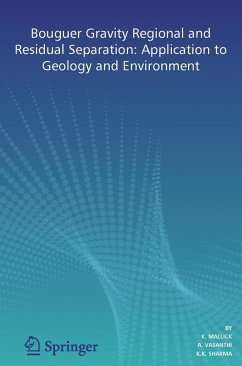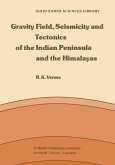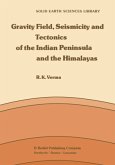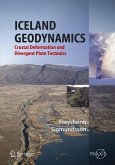Resolving regional and residual components arising out of deeper and shallower sources in observed Bouguer gravity anomalies is an old problem. The technique covered here is an attempt to sort out the difficulties that performs better than existing methods.
The process of regional-residual separation in potential field is age-old. Broadly, there are two techniques for regional-residual resolution, viz., graphical and analytical. Both the techniques have their own respective shortcomings. In this book, the authors have described the technique based on finite element method in which only eight (or twelve) nodal observed gravity values are used for the regional computation, thereby eliminating the possible contamination of anomalous fields and also the technique does not assume an explicit model and physical properties like density of rocks etc. in the regional computation. The book discusses the advantages of this technique viz., it is not site-specific; the computation is independent of any prior assumptions as to the form and depth of shallow or deeper structures; it can handle data distributed at random or on a regular grid on the map space; and the neighbouring surveys join smoothly.
The book focuses on application of this new technique which has been demonstrated in different fields, such as hydrocarbon, minerals and groundwater, structural studies, earthquake and engineering studies and impact structures.
Hinweis: Dieser Artikel kann nur an eine deutsche Lieferadresse ausgeliefert werden.
The process of regional-residual separation in potential field is age-old. Broadly, there are two techniques for regional-residual resolution, viz., graphical and analytical. Both the techniques have their own respective shortcomings. In this book, the authors have described the technique based on finite element method in which only eight (or twelve) nodal observed gravity values are used for the regional computation, thereby eliminating the possible contamination of anomalous fields and also the technique does not assume an explicit model and physical properties like density of rocks etc. in the regional computation. The book discusses the advantages of this technique viz., it is not site-specific; the computation is independent of any prior assumptions as to the form and depth of shallow or deeper structures; it can handle data distributed at random or on a regular grid on the map space; and the neighbouring surveys join smoothly.
The book focuses on application of this new technique which has been demonstrated in different fields, such as hydrocarbon, minerals and groundwater, structural studies, earthquake and engineering studies and impact structures.
Hinweis: Dieser Artikel kann nur an eine deutsche Lieferadresse ausgeliefert werden.
From the reviews:
"The book ... is essentially a catalogue of examples of the application of gravimetry in identifying and modelling anomalous density bodies in different geological contexts. ... The 288-page book, by K. Mallick, A. Vasanthi and K.K. Sharma, is pleasant and easy to read ... . The examples studied are all well documented and explained with abundant graphics and references ... . the book can easily reach a wide readership, from geologists to physicists and mathematicians, and in general anyone interested in Earth sciences." (Antonio G. Camacho and José Fernández, Pure and Applied Geophysics, September, 2012)
"The book ... is essentially a catalogue of examples of the application of gravimetry in identifying and modelling anomalous density bodies in different geological contexts. ... The 288-page book, by K. Mallick, A. Vasanthi and K.K. Sharma, is pleasant and easy to read ... . The examples studied are all well documented and explained with abundant graphics and references ... . the book can easily reach a wide readership, from geologists to physicists and mathematicians, and in general anyone interested in Earth sciences." (Antonio G. Camacho and José Fernández, Pure and Applied Geophysics, September, 2012)








